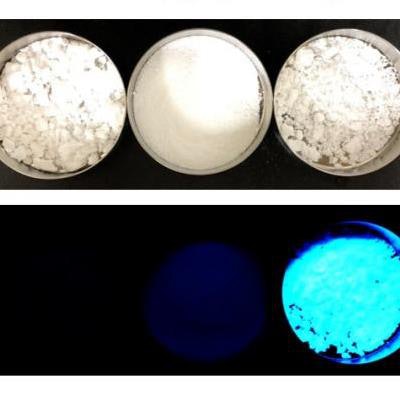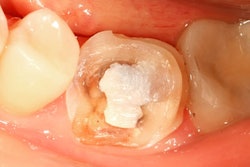
Incorporating the fluorescent molecule pyromellitic acid into the substitute bone material octacalcium phosphate (OCP) may lead to improved bone and teeth repairs, according to a study published on January 11 in Communications Chemistry.
When researchers from Tokyo Medical and Dental University added the fluorescent acid to OCP, the bone replacement material lit up. It appeared bright blue under ultraviolet light and was much brighter than pyromellitic acid not mixed with bone precursors, the researchers found.
 OCP with incorporated pyromellitic acid showed a brilliant blue emission under ultraviolet light, owing to the incorporated fluorescent molecule. Image courtesy of the department of inorganic biomaterials, Tokyo Medical and Dental University.
OCP with incorporated pyromellitic acid showed a brilliant blue emission under ultraviolet light, owing to the incorporated fluorescent molecule. Image courtesy of the department of inorganic biomaterials, Tokyo Medical and Dental University.The finding expands the possibilities for real-time visual analysis. Use of the material could also help medical practitioners predict the timeline for patient recovery and other diagnostic outcomes, according to a press release from the university. The researchers hope the material can eventually be used in dental implants, bone fractures, and other challenging surgical applications.



















